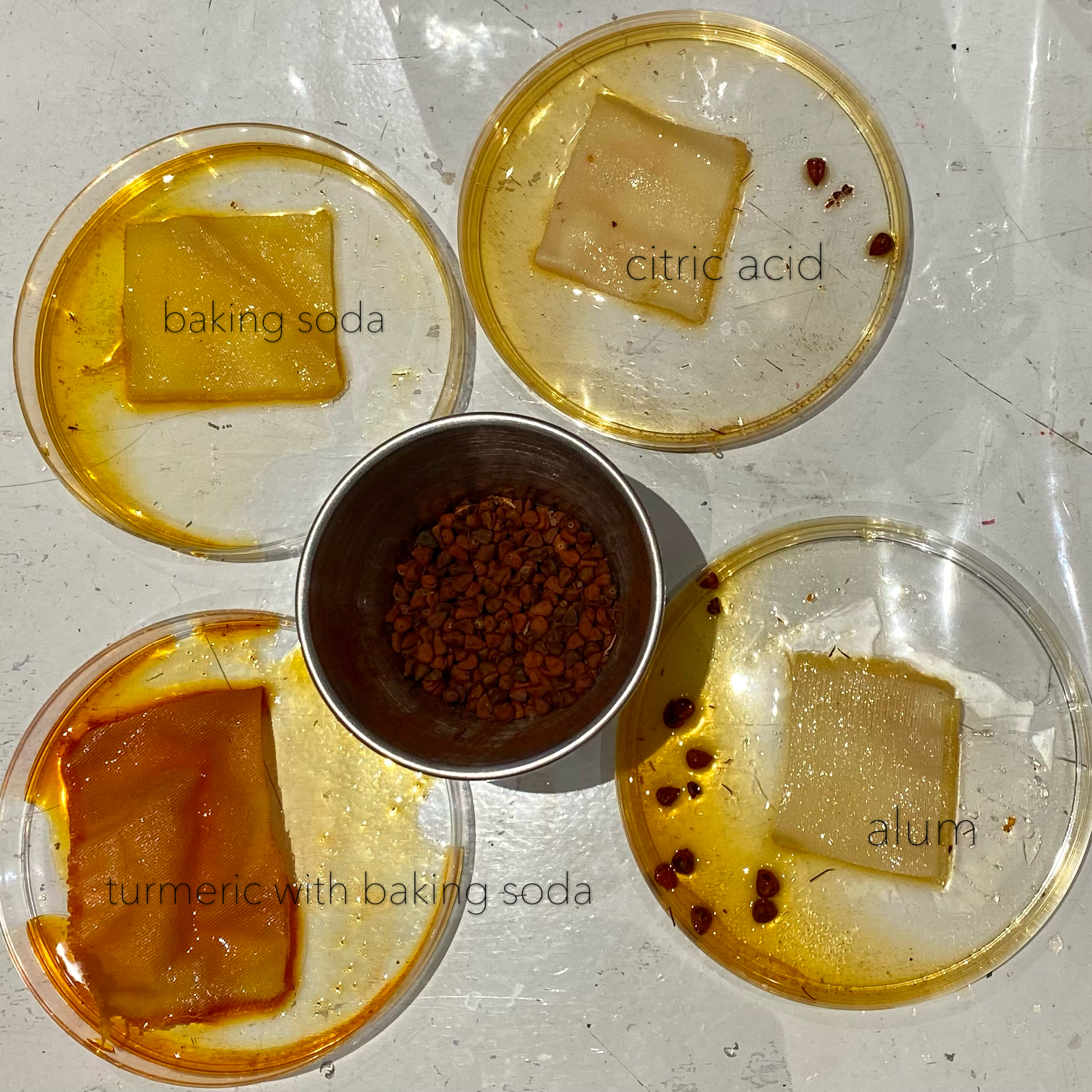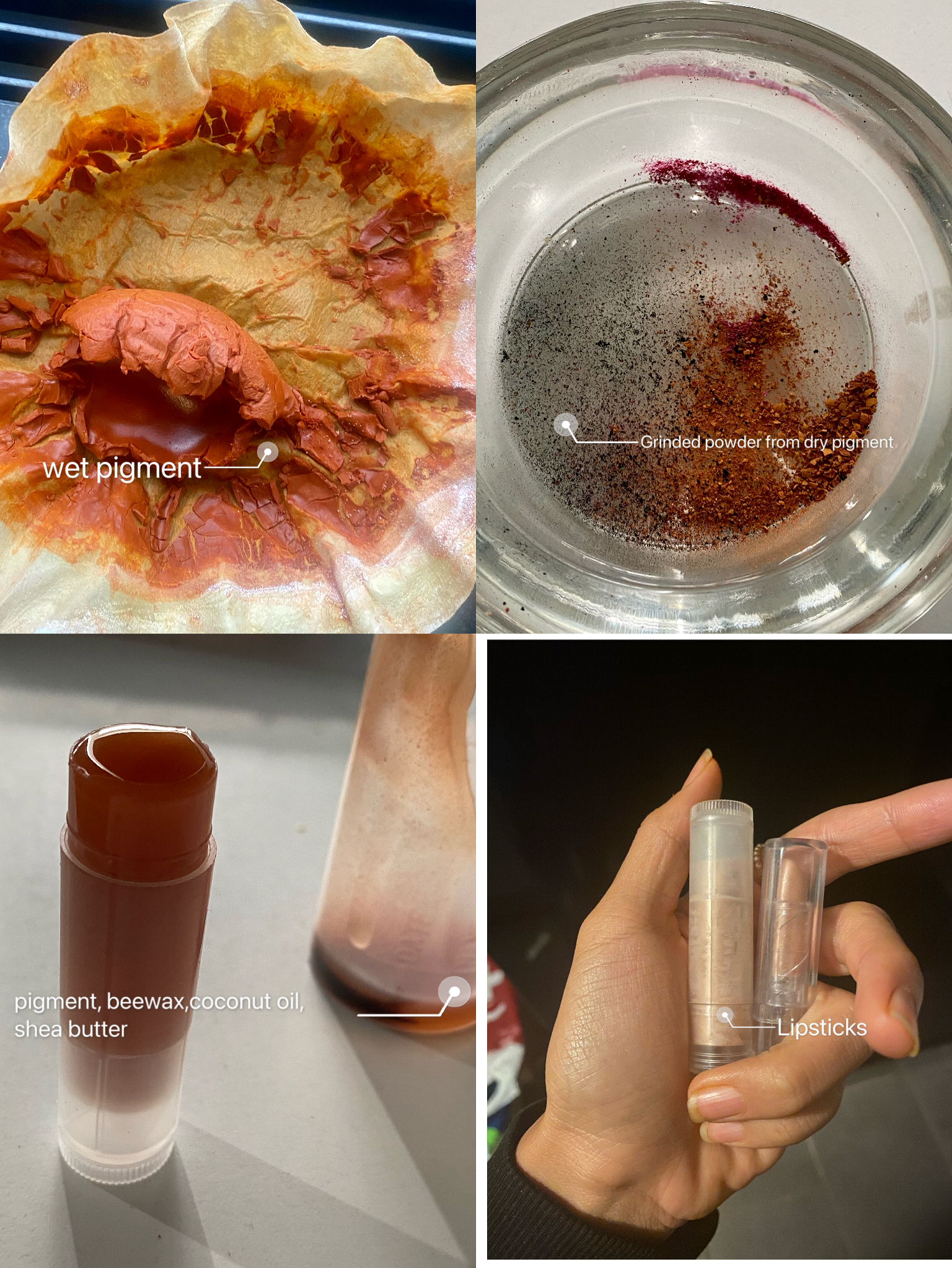4. Biochromes¶

Process of Dye, ink, and pigment¶
October 14th weddnesday 1. Weight of fiber (animal/vegetable) 2. scouring For vegetable fiber: 1 hour boiling 2sp soda: 4/5l water 3. Mordanting: 1 hour 10%Al for animal fibers 8 %crème dem tartar _______ 10-15 %Al for vegetable fibers 3. prepare the dye bath (ethanol/water/warm or cold) 1. Preparation Scouring: I started boiling vegetable fibers @ 13:30 (with soda) stoped @14:45. The water turned yellow.
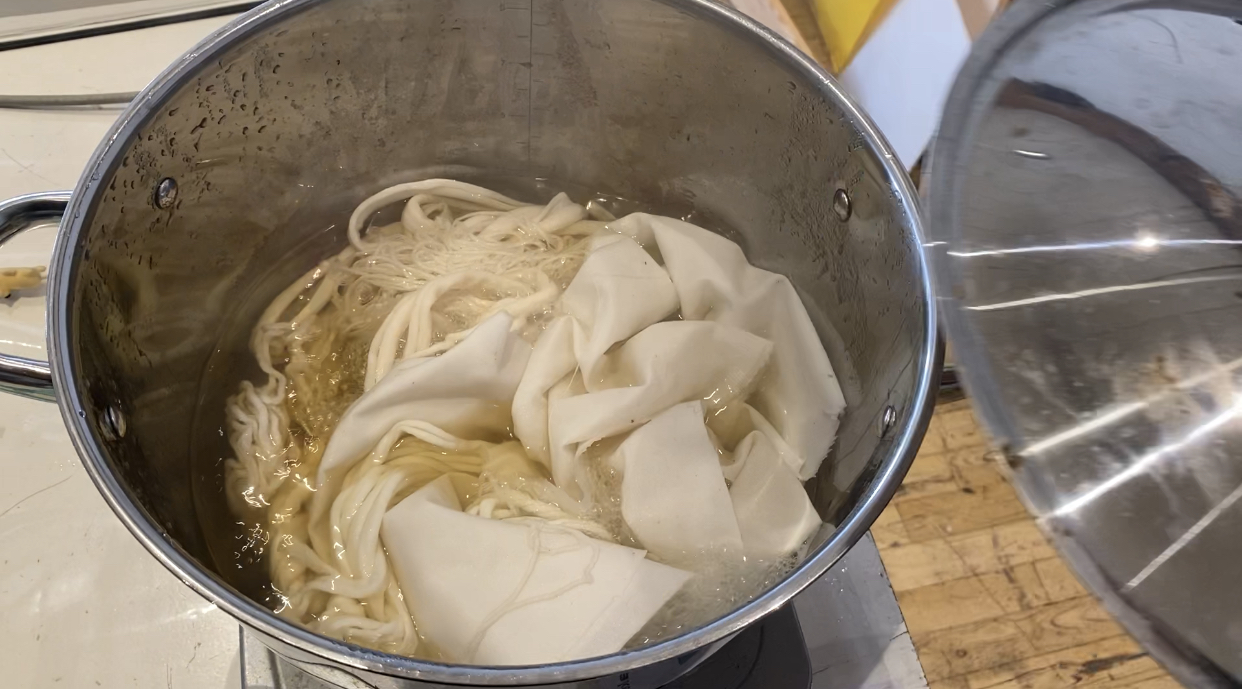
Mordanting I added Alum to the pot and started boiling the vegetable fibers@ 14:50 At 15:40 found out the heater is not working properly, so changed the heater. Took out at 16:20
I received premade wool (yarn and felt strips)and silk.
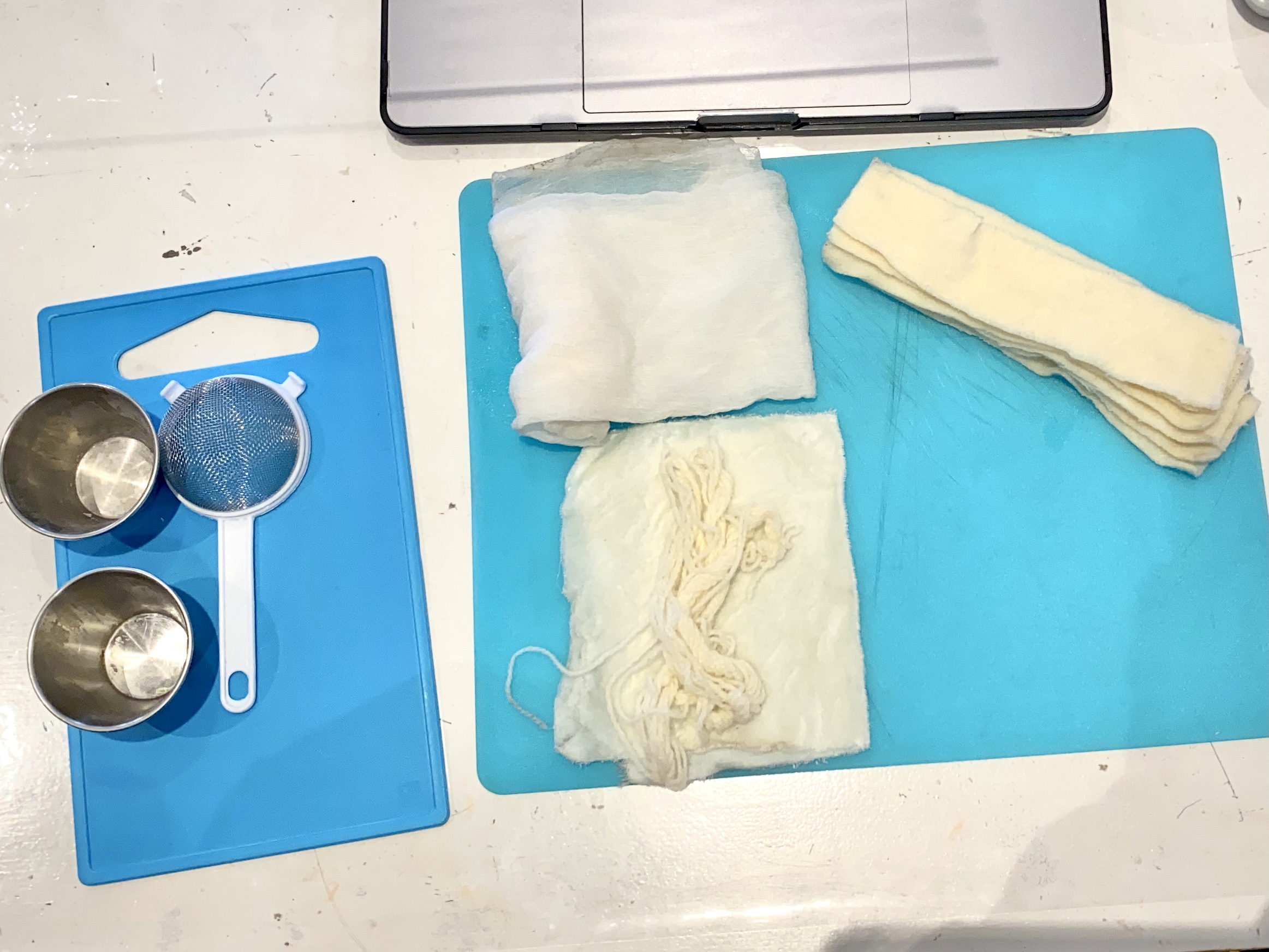
- Dye bath I use Annatto seeds for dye.
It turned warm water reddish immediately

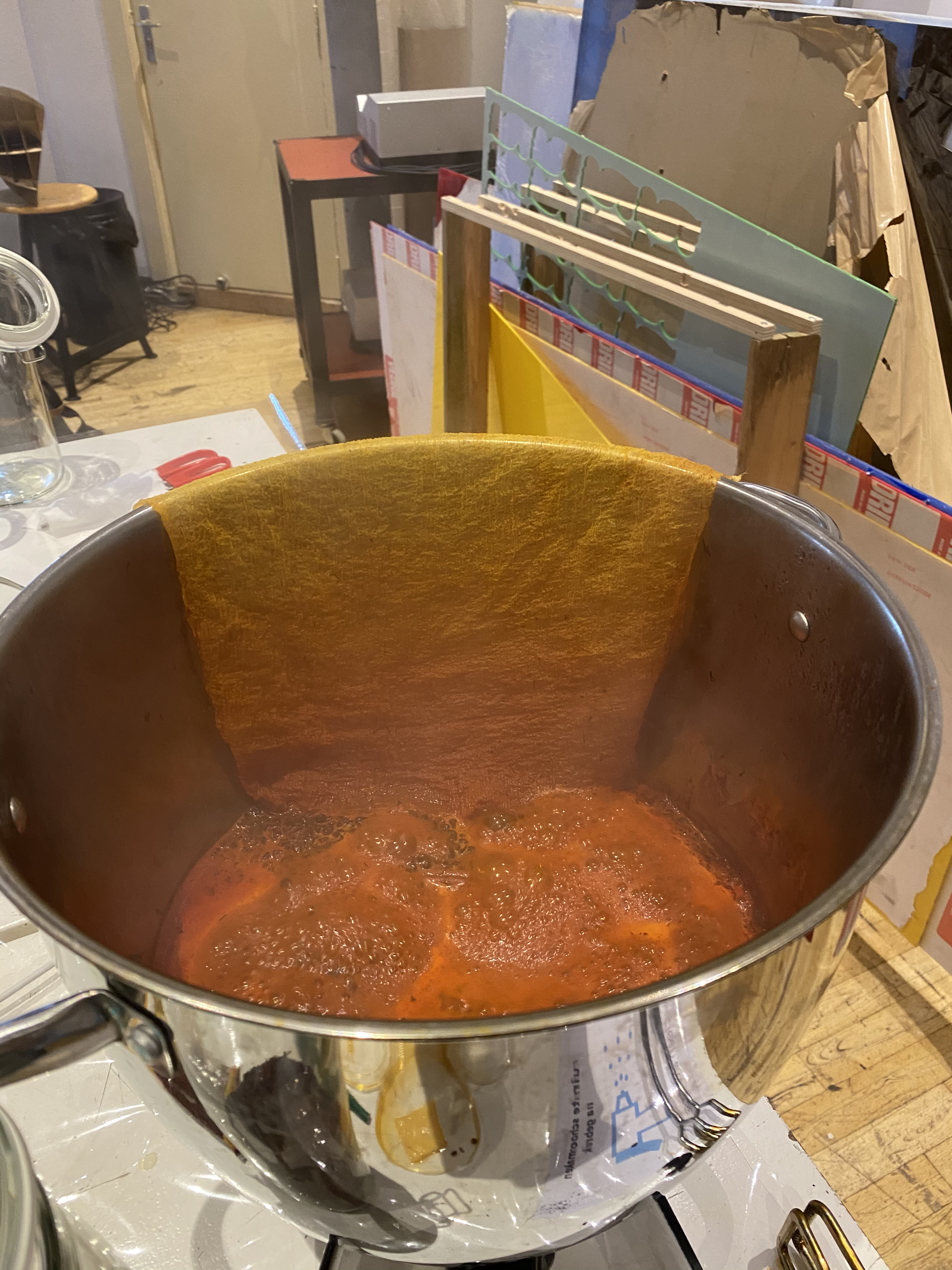
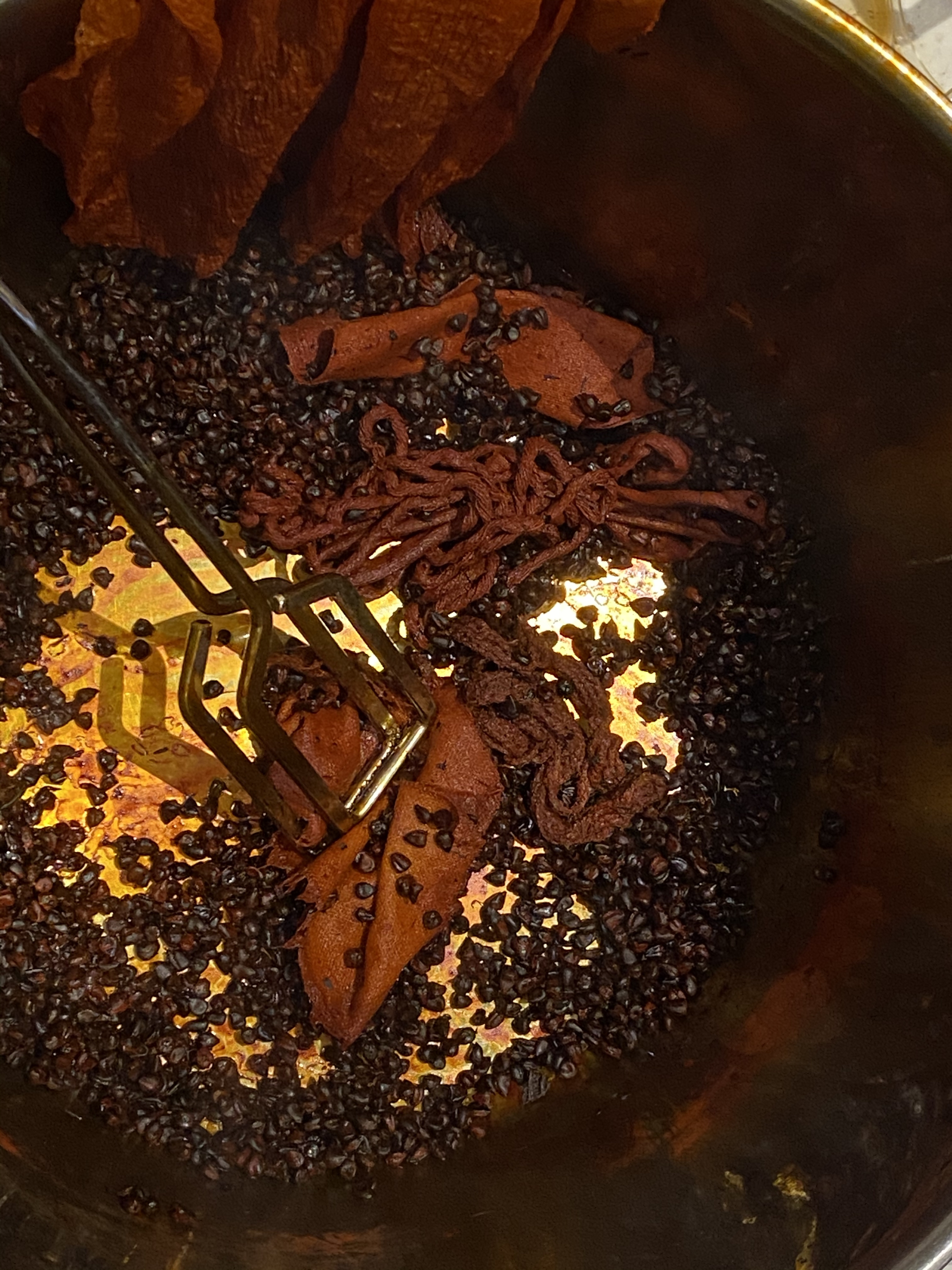
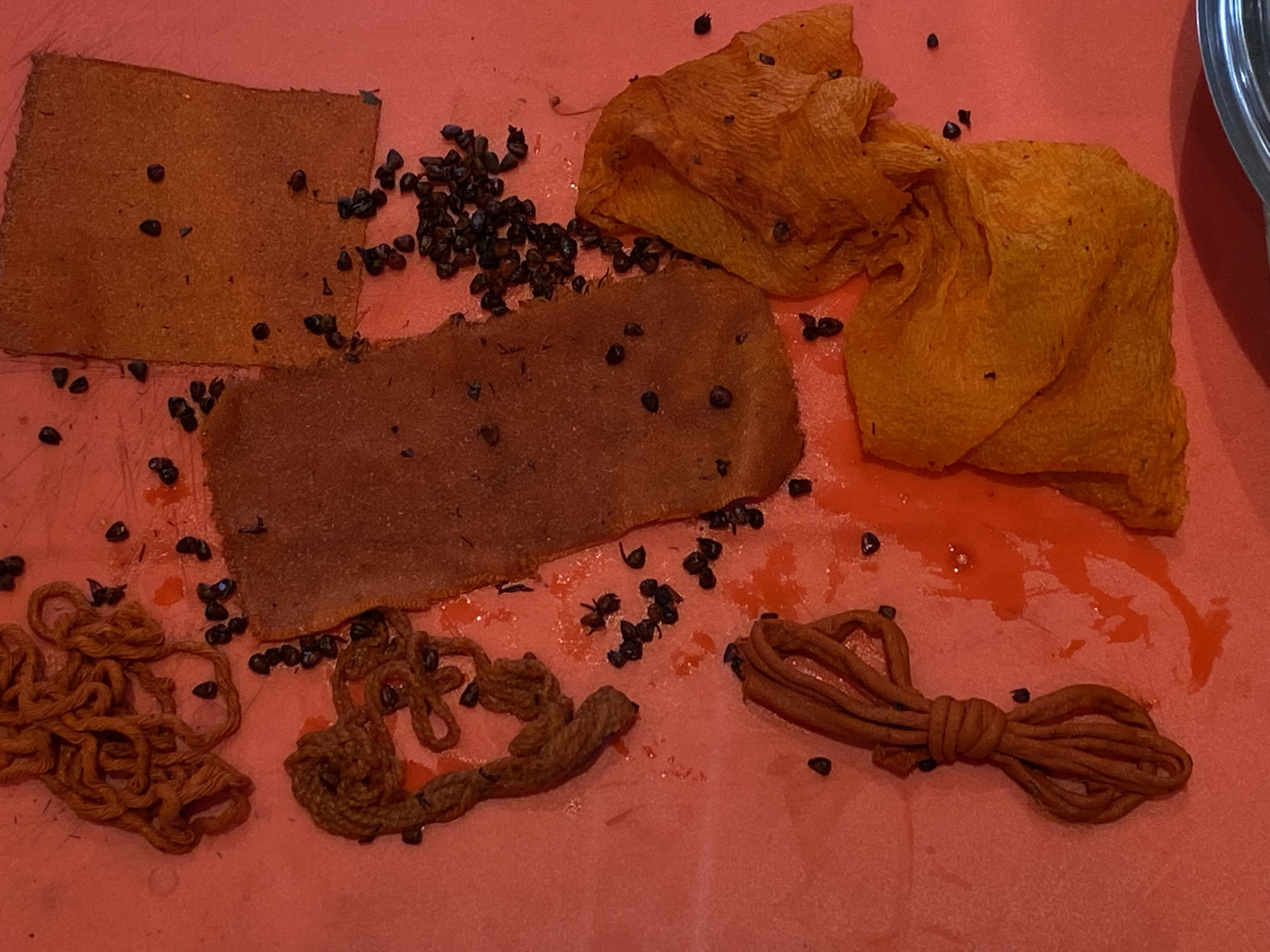
Then I added alum and and soda to extract the pigment from the dye. The dye bath is acidic and it foams rig
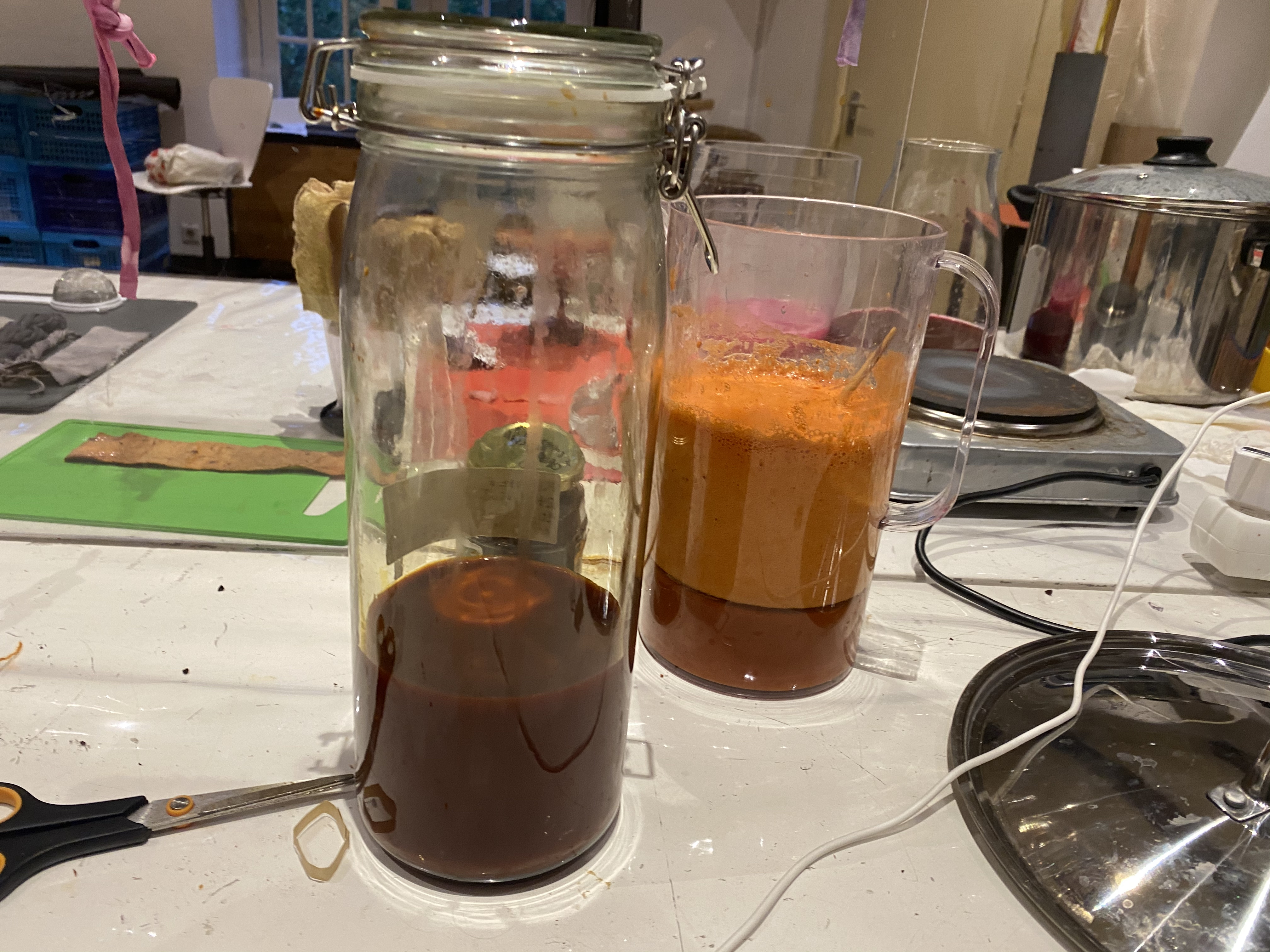
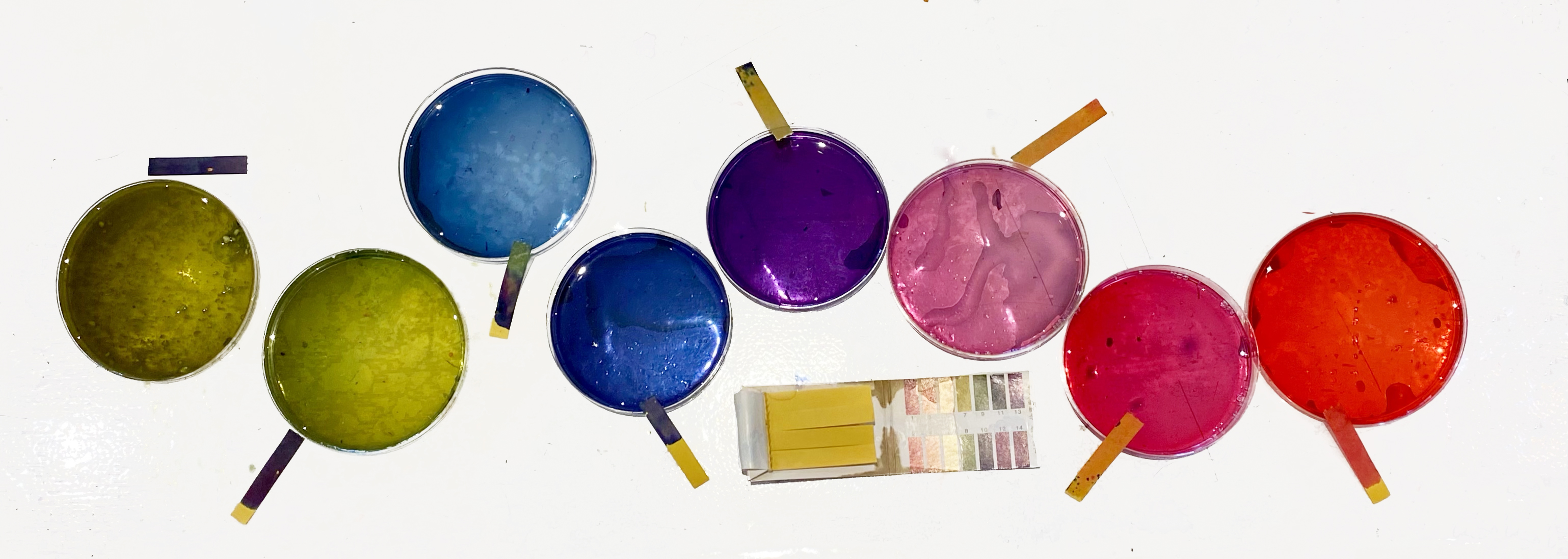
BIOCHROMES¶
The bacteria I used is called Serrata Marcensces.
Process: I took 2 pieces of silk fabrics. Fold/stitch/tying/etc....the fabric. it will affect how the bacteria distribute. I wonder if it works the same as shibori.(Later I found out it doesn't, it should not be handled the same way as shibori.I need to try to let it expose in more air to let the bacteria grow.)Then I added the fabrics to petri dish then put petri dish to high pressure cook to sterlize. The auto clavetape is taped on the top of the petri dish which indicate if the necessary temprature is reached.
Preparing for the food for bacteria while the fabric is still cooking. The food is made of luria broth powder, water, and peanut butter. Mix the food well and sterlize in the high pressure cook as well. Give the food to bacteria.

Transfering the bacteria to the sterlized petri dish with fabrics. The bacteria that grown in liquid food can be transfered with pipette and the ones grown on solid food can be transfered with inoculation loop.
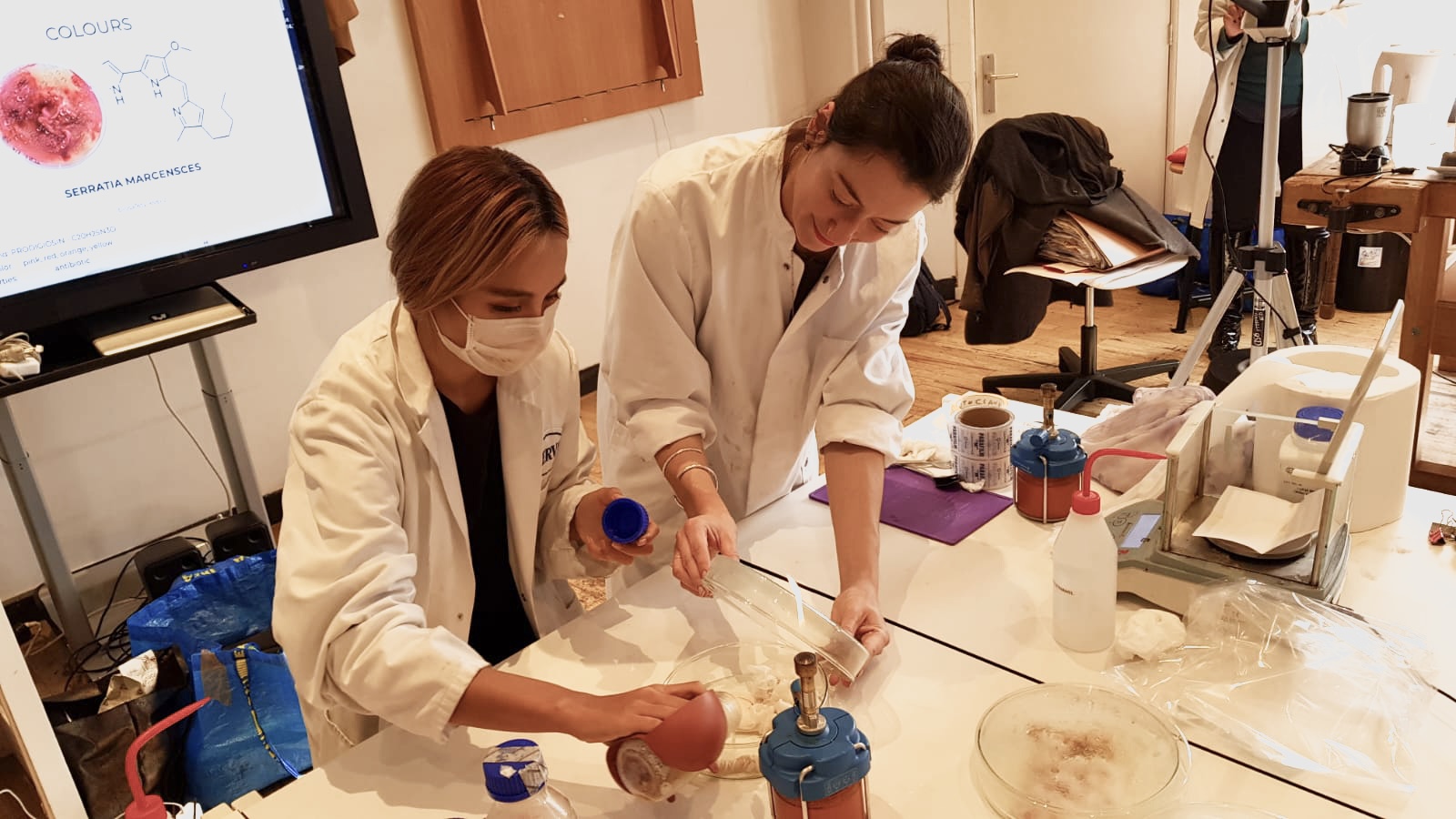

Incubating and waiting. The incubator is set to about 22C which is not much warmer from the room temprature but it keeps the consistancy of the temprature.I waited for about 5 days before I took out the petri dish out of the incubator.
Killing the bacteria. After took out the bacteria out of the incubator, put on autoclave tape and cook the fabric under high steam pressure pot (ser the temperature to 200C, when the steams,lower the temperature to 120C, heat for 20min) take the fabric out of petri dish, clean and dry.
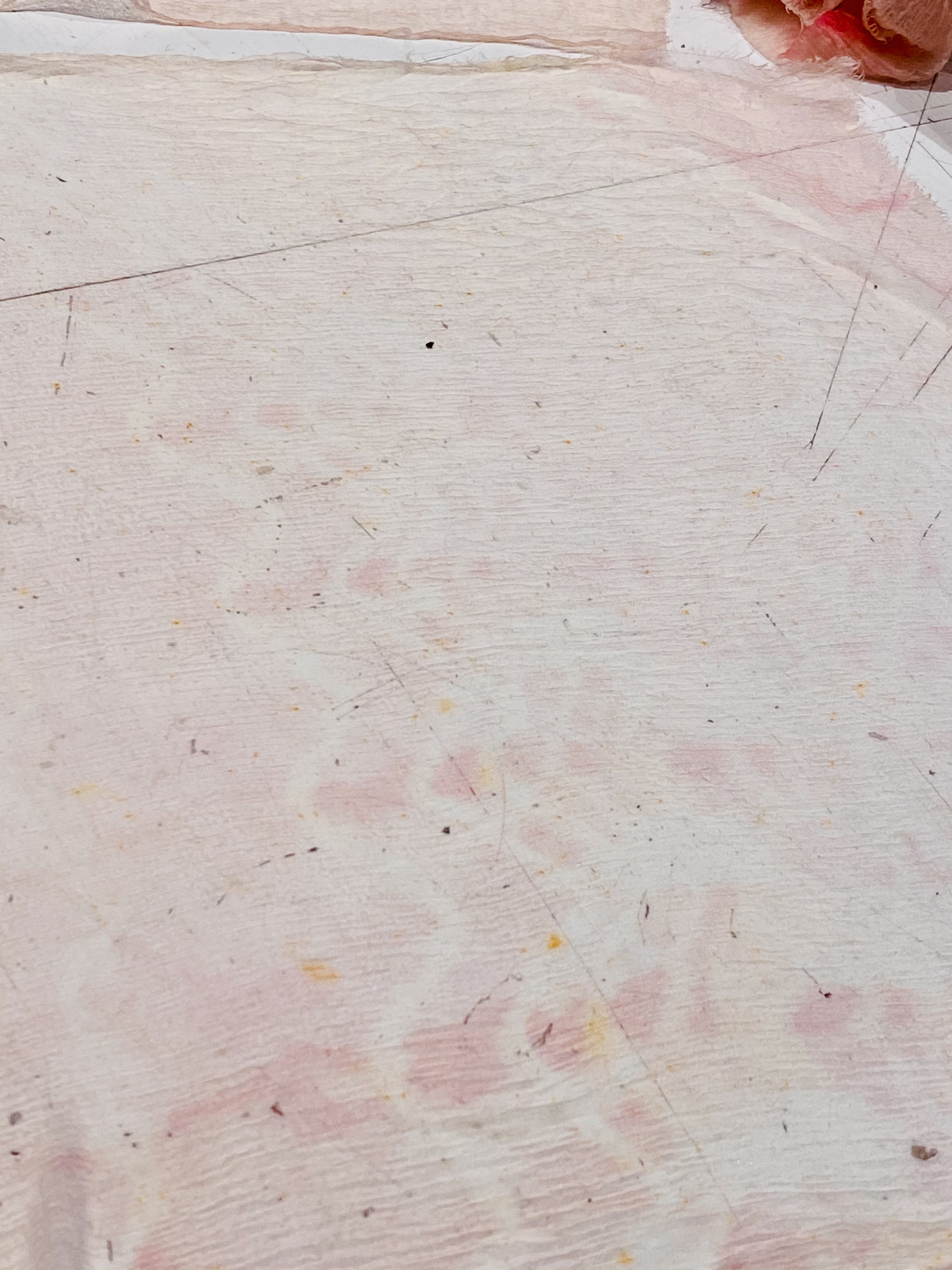
Class notes and other research¶
class notes.
reason to call biochrome: anything produced by living organisms. color present during life. History color: curva de las manos, santa cruz argentina: the first dye found tutankamon: 6 color: painter pallette understanfing color: newton: wheel of color. color is light. filter light into 7 colors color from recipes to perceptions: 1666 Newton first color wheel. Human undrstand and percieve colors. Natural color sources: organic and inorganic. plant animal organism: bacteria, ink: debse kuqyud, sikyvke, dusoered. into material, onto the material dye: liquid bath, soluble is water into the material pigment powder insoluble in water onto the material
DYE; chemically bonded from natural to synthetic dyes toxic dye
dying process and water consunption banned materials in EU but not from all over the world.
- weight the textiles and fibers. (create reciepies)
- combine water with mordant
- heat up, stir, and add fibers
- combine dye stuff with vechicle
- boil, stir and strain
- preserve/ thicken/modify(PH sensitive: ex: pink goes blue)
PS. where dark clothes in case of dye splash, keep thing seperate. wool and silk dye very well use for test ot quick resul vegeable fibers.
Animal: rinse Vegi: boiling for 1 hr with Na2co3
Mordant: alum, iron, copper, soy... help colors interact
Alum: brighter. for animal copper
food dye: turmic. (not pigment or dye) annatto: seeds. used as lipstick. bright red. not ph sensitive but light pink when used as dye. good in oil hibiscus: change of PH onions madder cochinea: use alum for briliant colours campeche : black dye with iron eucalyptus leaces. with alum for mud green in cotton. without AL will be yellow acorn caps+iron liquor alkanet black beans: changes with ph change. lichen dried flakes +ammonia NH3
INK VEHICLE: WATER. EHANOL,oil, gel binder: arabic gum red: madder root, sandel wood.akkanet toot prussian+acid will produce toxic
not to use bio safety level 1+
bioshade waag.org

